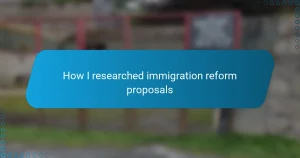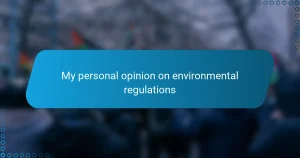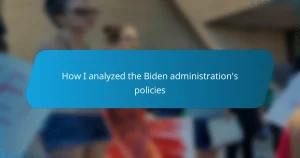Key takeaways
- Clarity in policy goals is essential to effectively address classroom challenges and ensure practical implications for educators and students.
- Stakeholder involvement, particularly from teachers and students, is crucial to creating policies that truly reflect the needs and realities of schools.
- Documentation of the policy review process helps track patterns, clarify complex language, and facilitates meaningful conversations with the education community.
- Successful education policies must balance ambition with realistic accountability measures to ensure they translate into tangible benefits for schools.
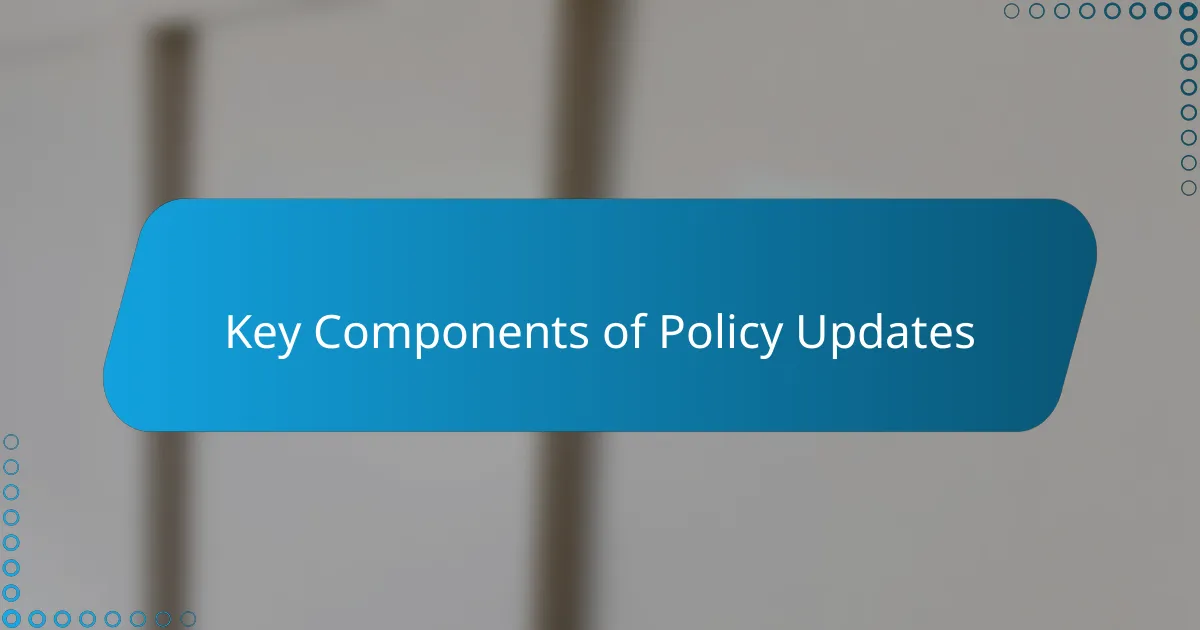
Key Components of Policy Updates
When I dive into education policy updates, one thing I constantly look for is the clarity of goals. Are they addressing real classroom challenges, or do they get lost in bureaucratic jargon? It’s frustrating when policies spell out broad ambitions without concrete steps, leaving educators and students in a fog.
Another key piece I focus on is resource allocation—does the update specify how funding and support will be distributed? I remember reading a policy that promised more technology in schools but offered no details on who’d get it or when. That gap made me question the policy’s practicality and sincerity.
Lastly, I consider stakeholder involvement. Who was consulted when crafting these updates? It matters deeply because policies without input from teachers, parents, and students often miss the mark. Don’t you feel that education decisions should come from those living the experience, not just politicians in distant offices?
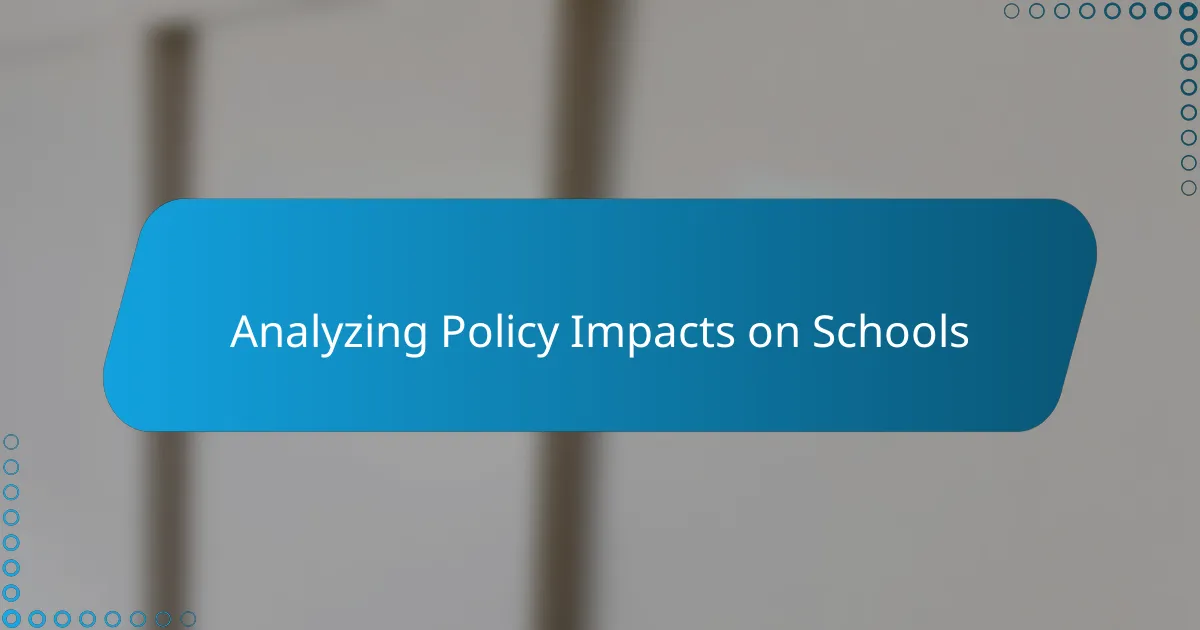
Analyzing Policy Impacts on Schools
When I analyze how these policy updates impact schools, I always look beyond the fancy language to see real change in classrooms. For instance, a policy might talk about improving test scores, but I ask myself—does it offer practical support for teachers struggling with large class sizes? Without that, it feels like empty words rather than meaningful help.
What really hits home for me is seeing how updates affect daily school life. I once followed a policy revision that promised extra counseling staff, but months later, the schools remained understaffed and overwhelmed. That kind of disconnect makes me wonder—are decision-makers truly aware of what schools need, or are they just ticking boxes?
Sometimes, the ripple effects are subtle but telling. A new attendance rule, for example, might seem straightforward but can put undue pressure on students facing challenges at home. I always try to think: who might get left behind when policies are applied this way? That question guides me every time I scrutinize these updates.
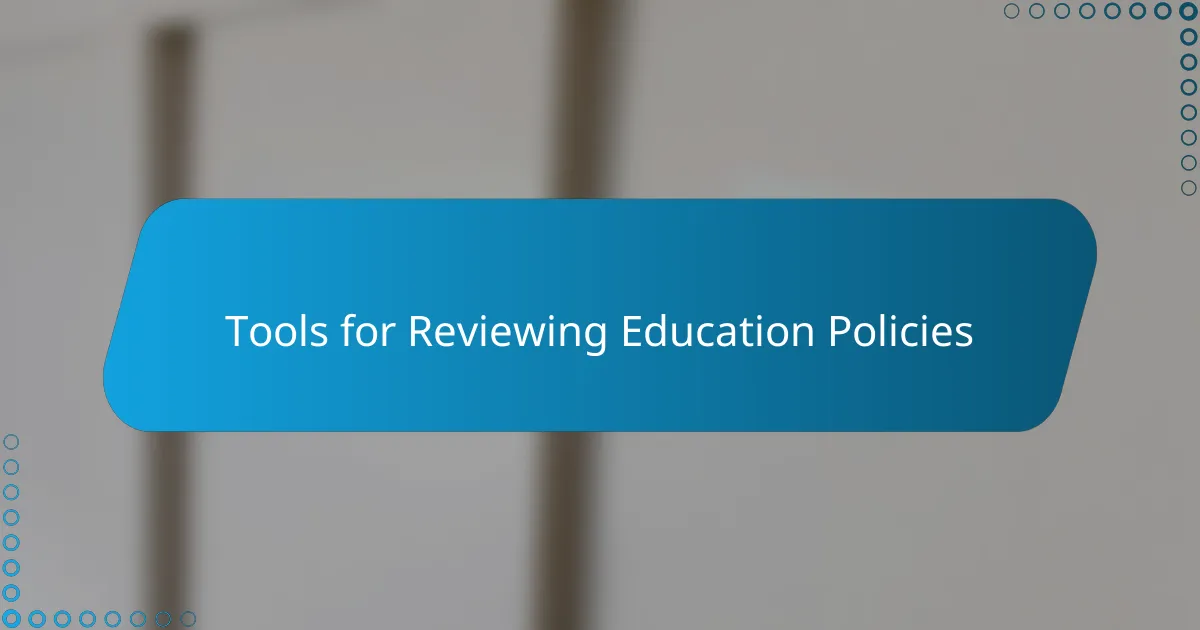
Tools for Reviewing Education Policies
One tool I find indispensable is policy databases that compile updates from various states and districts. They let me track changes over time and spot patterns, which is crucial because isolated updates rarely tell the full story. Have you ever tried piecing together scattered policy fragments? It quickly becomes overwhelming without a centralized resource.
I also rely heavily on analytic frameworks designed to evaluate policy clarity, feasibility, and impact. These frameworks push me to ask tough questions like, “Does this policy account for diverse student needs?” They help me move beyond surface-level reading and dive into what the policy actually means on the ground.
Sometimes, the best insights come from crowd-sourcing perspectives through teacher forums and education advocacy groups. Listening to educators’ real-world experiences often reveals gaps that data alone can’t capture. I recall a heated forum discussion where teachers shared how a ‘one-size-fits-all’ tech initiative ignored their classrooms’ unique challenges—something no report had mentioned. That, to me, is the heart of effective policy review.
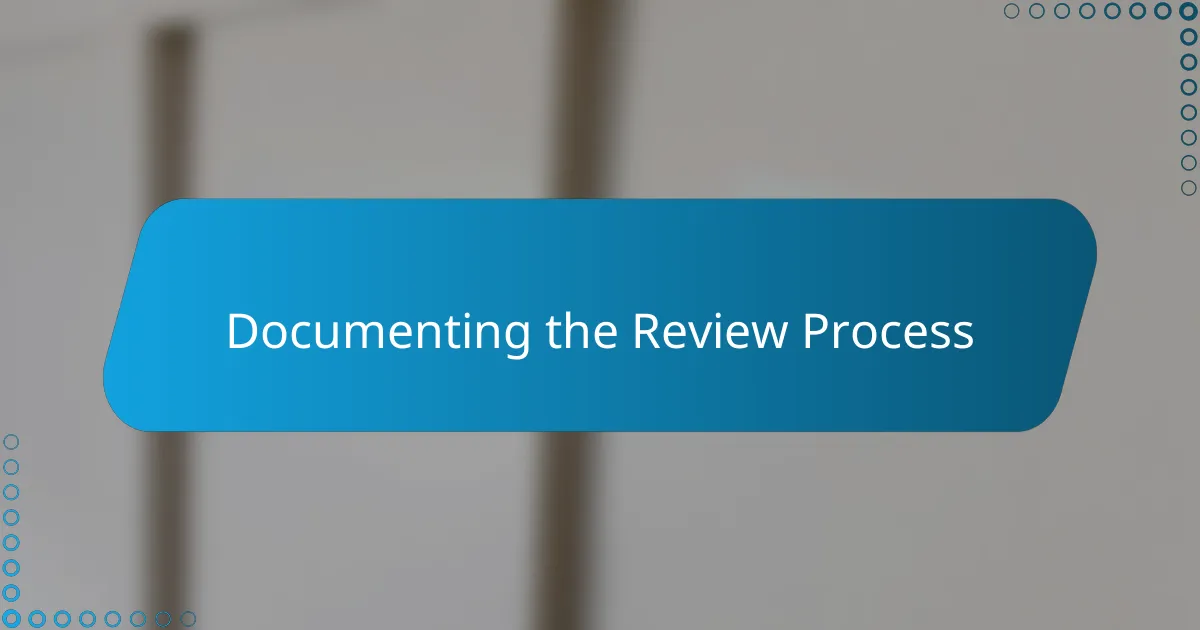
Documenting the Review Process
I make it a point to document every step of my review process in detail, not just to keep track but to hold myself accountable. For example, when I analyzed that tech funding policy, I noted where the gaps were and why certain explanations fell short. Don’t you think thorough documentation helps us see patterns we’d otherwise miss?
Writing down my thoughts and reactions as I go also helps me process the complex language that often clutters education updates. I remember feeling overwhelmed by one dense policy, but jotting down “unclear resource distribution” right next to a problematic paragraph made the issue undeniable. That little habit keeps me honest and focused.
Sometimes, I wonder how many readers realize the value of transparency in reviewing policies. When I share my documented findings publicly, it sparks conversations and even feedback from educators who feel heard. Isn’t that a powerful way to connect analysis with real voices in education?
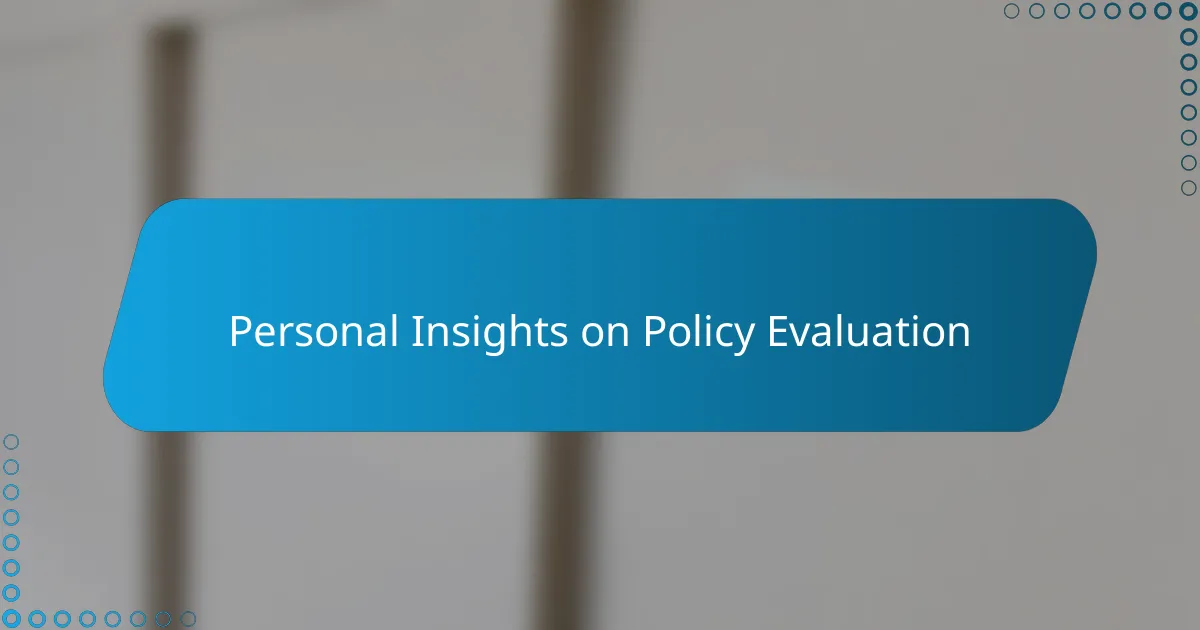
Personal Insights on Policy Evaluation
Evaluating education policies is never just about ticking boxes for me—it’s a deeply personal exercise in empathy and critical thinking. I often catch myself asking, “Would I feel supported if I were a teacher or student affected by this?” Those moments of reflection turn abstract policy jargon into real human stories.
Sometimes, I’m struck by frustration, especially when a policy looks promising on paper but seems tone-deaf to everyday struggles. I recall one update packed with statistical goals but utterly silent on how overstretched counselors might cope. It made me question whether policymakers truly step into educators’ shoes or merely draft from an office desk.
Do you ever wonder how much personal bias shapes our reading of these documents? I’m aware that my years spent volunteering in classrooms color my expectations—I want policies that respect teachers’ expertise and won’t add needless burdens. That perspective, I believe, sharpens my critique and keeps my evaluations grounded in reality.
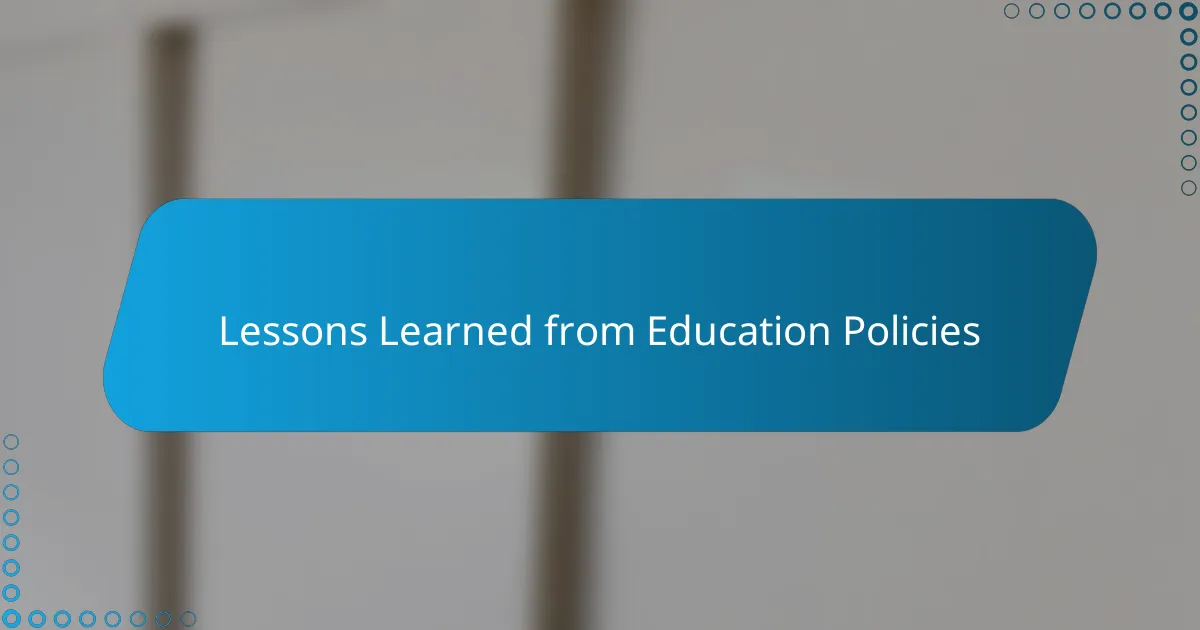
Lessons Learned from Education Policies
What I’ve learned from reviewing numerous education policies is that clarity and realism must go hand in hand. Policies that sound inspiring but fail to consider the day-to-day realities in schools often end up feeling hollow. Don’t you think it’s frustrating when the best intentions get lost somewhere between legislative drafting and actual implementation?
Another lesson I can’t ignore is the importance of meaningful involvement from those directly impacted. From my experience, policies crafted without teachers’ and students’ voices tend to overlook critical nuances. Have you noticed how those top-down decisions sometimes miss the mark because they don’t reflect on-the-ground feedback?
Lastly, I’ve realized that successful education policies balance ambition with accountability. When policies lack clear metrics or follow-up mechanisms, I’m left wondering if they’ll ever translate into real benefits. Tracking those outcomes is key—and it’s something I’ve made a point to demand in every review I conduct.
